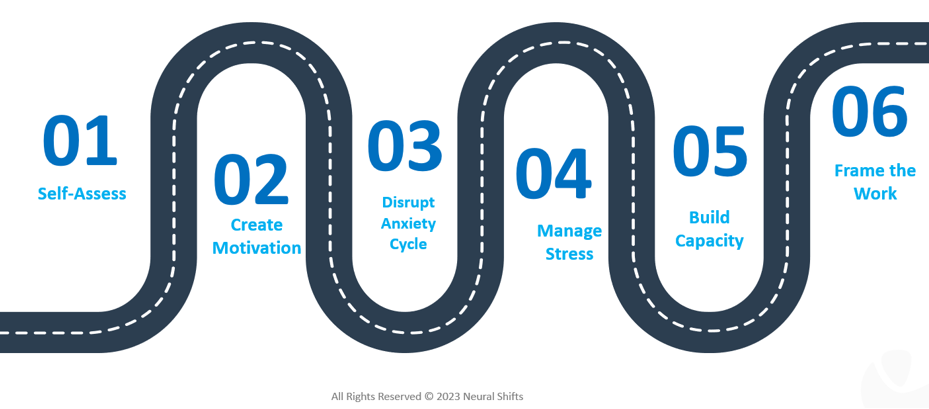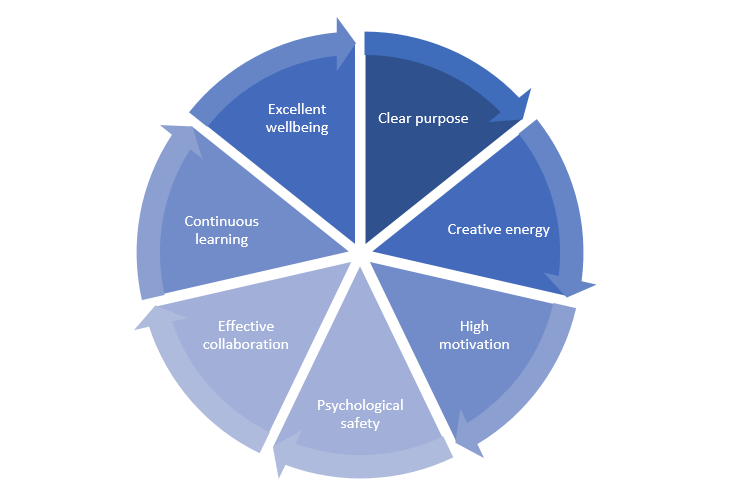Are you curious about how the pandemic and layoffs have affected employees’ mental health and work performance? You’re not alone. Many have been struggling to keep their heads above water in these challenging times. But there’s hope. Companies are now shifting their focus from just measuring employee engagement to measuring employee thriving.
Microsoft was the pioneer in measuring employee thriving, defining it as the state of being energized and empowered to perform meaningful work. To deepen our understanding of this concept, we delved into the research conducted by Gretchen Spreitzer and her colleagues, who describe thriving as a state where employees experience vitality and actively pursue opportunities for learning and growth. Leveraging these frameworks, we developed a comprehensive roadmap and launched a class designed to equip employees with the necessary tools to thrive in the face of adversity.
The Thriving RoadMap

The roadmap begins with a self-assessment to determine whether one is thriving or merely surviving. This involves identifying the key elements of thriving, which may include motivation, community support, energy, learning, and finding meaning in one’s work.
Employees are asking: How can we find motivation and energy?
Microsoft’s CHRO has said, the pandemic has left the world facing a human energy crisis. She suggested that leaders identify their employees’ motivational drivers and leverage them to help employees be engaged. We know that to boost energy and motivation, employees must recognize the things that energize them and consciously prioritize those activities. In this educational session, we stress the significance of identifying all extrinsic motivators, not solely relying on intrinsic motivators like autonomy, belonging, and competence. Relying solely on one external motivator, such as work, to provide a sense of self-worth can increase the risk of experiencing a psychological slump. So, they must assess all motivational drivers and invest their time accordingly.
As the law of conservation of energy states, energy cannot be created only transformed. This is key for moving out of survival mode. Employees need to consistently adopt stress management techniques to reduce the power of stressors and avoid being in a constant state of fear or being overwhelmed. Knowing how to transform negative emotional energy into a more positive state will lead to action.
On the road to thriving, employees need to build their capacity to thrive; filling their energy bucket with things that bring them energy, and setting boundaries to improve their performance. As well as, Disrupting the anxiety cycle around layoffs as this can have a significant impact on an employee’s mental health and work performance. A survival brain will make decisions out of fear that filled in the anxiety cycle.
Finding meaning in one’s work is also critical to thriving, and this can be achieved by framing the work appropriately. By understanding how their work contributes to the organization’s goals and mission, employees can find greater purpose in their work.
Thriving Team Culture

Employee thriving cannot be sustained without a culture that fosters thriving. Thus, is essential that managers provide a clear purpose, allow for creative energy, know how to increase motivation, and provide psychological safety for learning and failing. Creating a culture of psychological safety is especially important as it allows employees to feel comfortable expressing their ideas and concerns without fear of retribution. When employees feel safe, they are more likely to take risks, be creative, and share their ideas openly.
Continuous learning is also critical to building a thriving culture, as it fosters growth and development. Encouraging employees to learn new skills and take on new challenges can help them stay engaged and motivated. More importantly, avoid sending mixed signals preaching learning while rewarding only performance.
Finally, excellent well-being is essential for thriving, and managers can support their employees’ well-being by providing access to resources such as mental health services and modeling taking time off to care for their own health while respecting employees’ time off.
In conclusion, moving from surviving to thriving is a process that requires intentionality, personal growth and managerial support. Creating a culture of thriving takes time and effort, but the benefits are well worth it, resulting in engaged, motivated, and productive employees.
Photo credit: https://www.pexels.com/@jopwell/




0 Comments